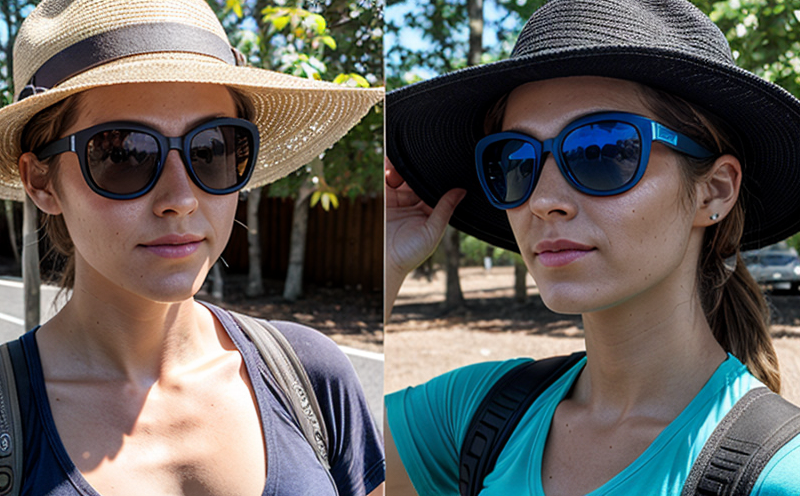UV Protection & Light Transmission Testing
The evaluation of UV protection and light transmission is critical in various industries, particularly those dealing with textiles. These tests are designed to ensure that materials used in clothing, outdoor furniture, automotive interiors, and other applications provide adequate protection against harmful ultraviolet radiation while maintaining desired optical properties.
UV protection testing aims at quantifying the ability of a material to block UV light from penetrating it. This is typically measured by the amount of UVB (280-315 nm) and UVA (315-400 nm) radiation that passes through or around a sample. The standard for this type of testing is ISO 17651, which provides guidelines on the measurement of ultraviolet protection factor (UPF).
Light transmission testing, on the other hand, focuses on determining how much visible light penetrates through a material. This parameter is essential in ensuring that textiles meet specific optical requirements such as colorfastness and transparency.
In addition to these fundamental aspects, the test procedures also consider factors like sample preparation, measurement conditions, and acceptable ranges of results. The specimens are usually cut into standardized shapes and sizes before being exposed to artificial sunlight or other light sources under controlled environmental conditions.
The instruments used for UV protection testing include spectrophotometers equipped with appropriate filters and detectors that can accurately measure the intensity of both incoming and transmitted light. For light transmission tests, integrating spheres and goniophotometers are commonly employed.
Acceptance criteria vary depending on the specific application but generally fall within a range from UPF 15 to UPF 50+ for textiles intended for prolonged exposure to sunlight. Compliance with these standards not only enhances consumer safety by reducing risks of sunburn and skin cancer but also protects brands' reputation through consistent product quality.
- Accurate measurement of UV protection factors (UPF).
- Compliance verification with international standards like ISO 17651.
- Assessment of light transmission properties ensuring optical performance expectations are met.
Eurolab Advantages
Eurolab stands out in the field of textile testing due to its commitment to excellence and innovation. With state-of-the-art laboratories equipped with advanced measurement equipment, our team of experienced professionals delivers reliable results tailored specifically to your needs.
- State-of-the-art laboratory facilities.
- Experienced technical staff specializing in textile analysis.
- Comprehensive range of services encompassing multiple testing parameters.
Our commitment to quality ensures that every test conducted adheres strictly to recognized international standards, providing you with confidence in the accuracy and reliability of our findings. Whether you're a manufacturer looking to enhance product performance or an R&D engineer seeking detailed insights into material behavior under different conditions, Eurolab offers unparalleled expertise.
Why Choose This Test
- To ensure compliance with regulatory requirements and certification criteria related to UV protection.
- To improve the durability of products exposed to direct sunlight, thereby extending their lifespan significantly.
- To develop new materials that offer superior protection against UV radiation without compromising on aesthetic appeal or functionality.
Use Cases and Application Examples
This testing is particularly relevant for industries where textiles are frequently exposed to sunlight. For instance, in the clothing sector, manufacturers use this information to design garments that protect individuals from harmful UV rays while still looking fashionable.
- Outdoor furniture and automotive interiors benefit greatly from knowing their UV protection levels since they are continuously exposed to sunlight.
- In the construction industry, choosing suitable window treatments can make a significant difference in preventing heat gain while maintaining indoor comfort.
The results obtained from these tests play crucial roles in determining whether products meet specified standards or exceed them. By understanding how much UV light passes through materials, manufacturers can optimize their designs to provide better protection for users without sacrificing style or functionality.





